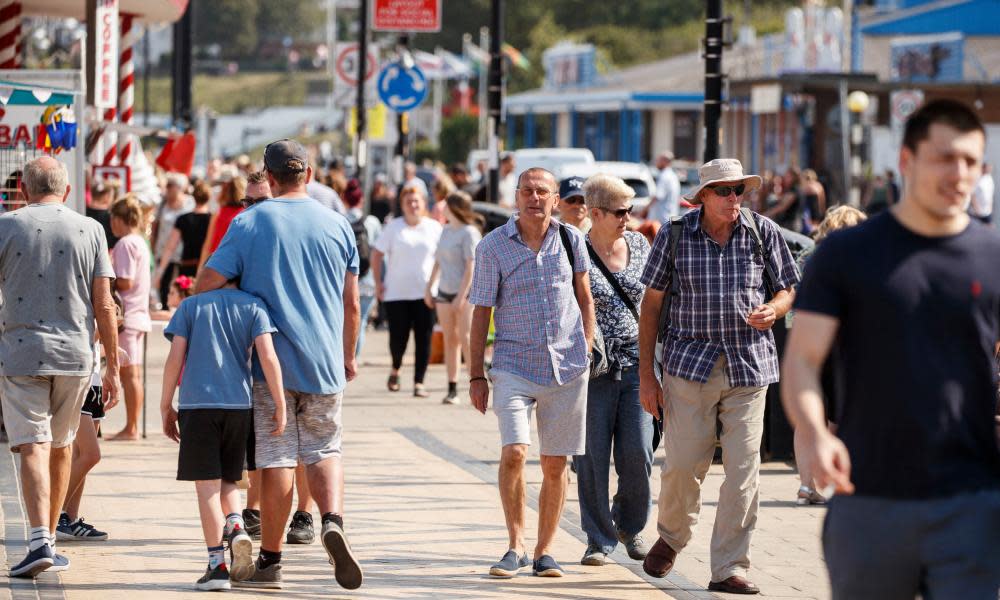UK consumer spending approaches levels last seen before coronavirus

Sunny weather and the reopening of non-essential shops across most of the UK has fuelled an increase in consumer spending close to pre-pandemic levels, according to retail industry figures.
The deepest recession in a century is expected to be confirmed on Wednesday, but figures from the British Retail Consortium (BRC) and accountancy firm KPMG indicated that a recovery is under way via the consumer, with total retail sales increasing by 3.2% in July compared with the same month a year ago.
Food, furniture and homeware sales boomed as people ditched their usual summer holiday plans and increasingly invested in their homes. In a sign of shoppers returning to the high street and ramping up spending online, separate figures from Barclaycard – Britain’s biggest credit card provider – also revealed a bounce-back in overall consumer spending.
According to the snapshot compiled from credit and debit card transactions, overall spending fell by just 2.6% in July compared with the same month in 2019 – the best performance since lockdown began. The figures paint a broader picture of household spending than the BRC data because they take account of any spending on cards – including in restaurants, pubs and bars, as well as in shops and online.
The figures come before official data on Wednesday that is expected to reveal a decline of 21% in gross domestic product (GDP) in the three months to the end of June. After a decline of 2.2% in the first quarter, the figures will confirm the UK economy’s descent into recession – defined as two successive quarters of negative growth – after the coronavirus outbreak spread in March and the government imposed a nationwide lockdown.
The release of pent up-demand in July fuelled a rise in food and drink spending in particular, according to both surveys, while spending in sports and outdoor stores rose sharply as the warm weather encouraged more people to spend time outside.
Hairdressers, nail bars and beauty salons starting to reopen their doors after four months of enforced closure lifted spending, while furniture stores and electronics retailers reported their strongest figures this year.
There were also positive signs for restaurants, pubs and bars, with overall declines of 64.2% and 43% respectively in July as more venues reopened – an improvement from declines of 86% and 93% in June, according to Barclaycard. The figures were recorded before the launch of the government’s “Eat out to help out” scheme began in August.
Despite signs of a recovery taking hold, many shops continued to struggle, with many people still reluctant to go out and office workers continuing to work from home.
Over the three months to July, in-store sales of non-food items declined 29%, with clothing sales suffering most.
Paul Martin, UK head of retail at KPMG, said September would prove the real test for consumer spending and the strength of Britain’s economic recovery, in a month when spending typically rises after the end of the holiday season and when adults spend money on their children returning to school.
“With the furlough scheme unwinding and wider economic uncertainty set for the autumn, consumer anxiety will likely rise along with it. This will place more scrutiny on disposable income and make life even tougher for retailers,” he said.
Following the non-essential retail lockdown and continued weak levels of demand at some stores, growing numbers of retailers are announcing job cuts and shop closures across the country – including at major high street brands such as Boots, John Lewis and Marks and Spencer.
Helen Dickinson, chief executive of the BRC, said: “While the rise in retail sales is a step in the right direction, the industry is still trying to catch up lost ground, with most shops having suffered months of closures.
“The fragile economic situation continues to bear down on consumer confidence, with some retailers hanging by only a thread in the face of rising costs and lower sales.”


